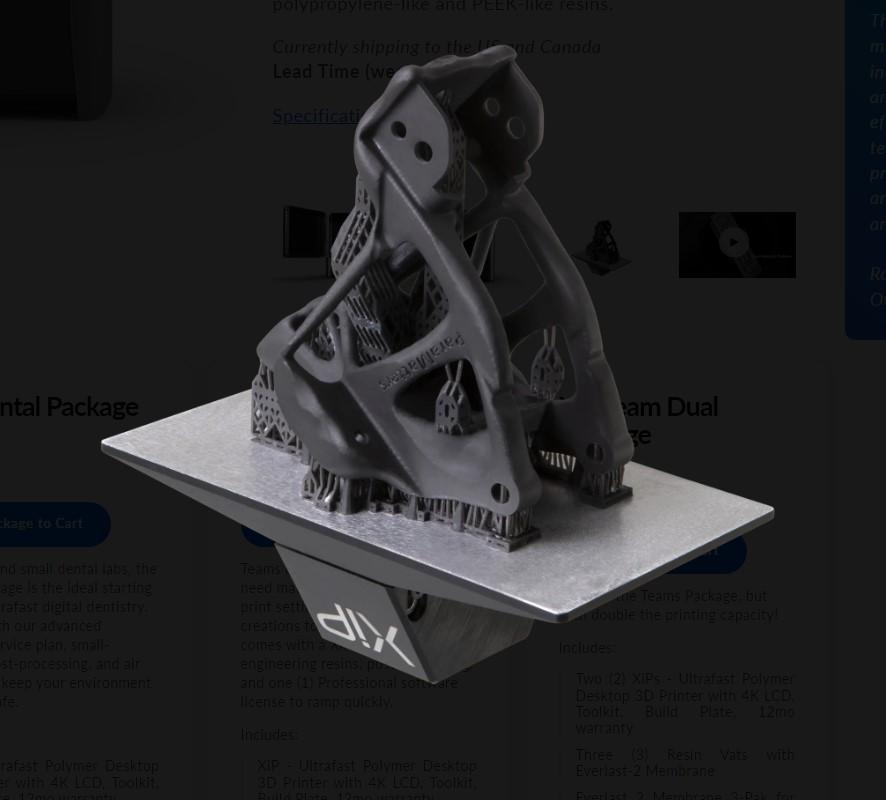- FMA
- The Fabricator
- FABTECH
- Canadian Metalworking
Our Publications
Categories
- Additive Manufacturing
- Aluminum Welding
- Arc Welding
- Assembly and Joining
- Automation and Robotics
- Bending and Forming
- Consumables
- Cutting and Weld Prep
- Electric Vehicles
- En Español
- Finishing
- Hydroforming
- Laser Cutting
- Laser Welding
- Machining
- Manufacturing Software
- Materials Handling
- Metals/Materials
- Oxyfuel Cutting
- Plasma Cutting
- Power Tools
- Punching and Other Holemaking
- Roll Forming
- Safety
- Sawing
- Shearing
- Shop Management
- Testing and Measuring
- Tube and Pipe Fabrication
- Tube and Pipe Production
- Waterjet Cutting
Industry Directory
Webcasts
Podcasts
FAB 40
Advertise
Subscribe
Account Login
Search
Desktop 3D printer for prototyping and building production-grade parts
- July 4, 2022
- Product Release
- Additive Manufacturing
Nexa3D is set to release its new resin XiP desktop printer, which features a 190- by 120- by 210-mm build envelope and prints at speeds up to 18 cm/hr. The open-material platform lets users build prototypes and production-grade components for engineering, dental, medical, education, and other industries.
The masked-SLA 3D printer is compatible with a range of general-purpose and elastomeric materials and polypropylene-like and PEEK-like resins.
What distinguishes the XiP from other resin desktop printers is its proprietary Lubricant Sublayer Photocuring technology, Nexa explains. LSPc is a type of masked-SLA technology and, as with traditional SLA printing, mSLA cures resin by exposing the material to UV light. But instead of tracing each layer with a laser beam, it uses a larger-area UV light source that is “masked” with an LCD screen. This allows the patterned light to expose the resin consistently and simultaneously across the curing plane. This makes mSLA much faster than traditional SLA.
And LSPc is faster still, claims Nexa.
LSPc uses a UV light array combined with the LCD mask to uniformly expose the entire build area, resulting in evenly detailed prints. The pitch of the 9.3-in. 4K LCD screen used in LSPc technology is 52 microns. At that size, an XiP pixel is already a fraction of the laser-spot size of other desktop SLA printers. As pixel sizes decrease further, surface quality improves.
- Podcasting
- Podcast:
- The Fabricator Podcast
- Published:
- 04/16/2024
- Running Time:
- 63:29
In this episode of The Fabricator Podcast, Caleb Chamberlain, co-founder and CEO of OSH Cut, discusses his company’s...
- Trending Articles
- Industry Events
16th Annual Safety Conference
- April 30 - May 1, 2024
- Elgin,
Pipe and Tube Conference
- May 21 - 22, 2024
- Omaha, NE
World-Class Roll Forming Workshop
- June 5 - 6, 2024
- Louisville, KY
Advanced Laser Application Workshop
- June 25 - 27, 2024
- Novi, MI


























